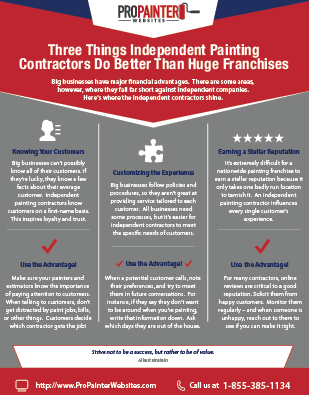Secret Seasonal Considerations For Commercial Outside Paint: What You Required To Be Enlightened Concerning
Secret Seasonal Considerations For Commercial Outside Paint: What You Required To Be Enlightened Concerning
Blog Article
Produced By-Leach Skafte
When you're preparing a business outside painting job, seasonal elements can make or break your results. You'll intend to think about how temperature and moisture impact paint application and drying times. Choosing the best season can ensure your paint sticks appropriately and lasts much longer. But which seasons are truly the very best for this kind of work? Let's discover the crucial elements that can influence your project's success.
The Influence of Temperature Level on Paint Application
When you're intending a business outside painting task, the temperature level can substantially influence just how well the paint sticks and dries out.
Preferably, you intend to paint when temperatures range between 50 ° F and 85 ° F. If it's also cool, the paint may not heal properly, causing problems like peeling off or breaking.
On the other hand, if it's too warm, the paint can dry out as well swiftly, preventing proper bond and leading to an unequal coating.
You should additionally take into consideration the time of day; early morning or late afternoon provides cooler temperatures, which can be much more favorable.
Constantly examine the maker's recommendations for the details paint you're making use of, as they usually provide support on the suitable temperature range for optimal results.
Humidity and Its Result on Drying Times
Temperature isn't the only environmental aspect that influences your industrial outside painting job; moisture plays a substantial role also. High humidity levels can decrease drying out times drastically, affecting the total top quality of your paint job.
When the air is filled with wetness, the paint takes longer to heal, which can bring about issues like poor adhesion and a higher threat of mold development. If you're repainting on a particularly humid day, be planned for prolonged delay times in between layers.
It's critical to check regional weather conditions and strategy as necessary. Ideally, https://www.realtor.com/advice/home-improvement/painting-over-dark-colors/ for moisture levels between 40% and 70% for optimum drying out.
Keeping these factors in mind ensures your task stays on track and supplies a lasting coating.
Best Seasons for Commercial Exterior Painting Projects
What's the most effective time of year for your business external paint jobs?
Spring and very early autumn are normally your best options. During these periods, temperature levels are mild, and humidity levels are typically reduced, developing suitable problems for paint application and drying.
Avoid summer's intense heat, which can trigger paint to dry as well promptly, resulting in bad adhesion and surface. Likewise, winter season's chilly temperatures can impede proper drying out and treating, taking the chance of the longevity of your paint work.
Aim for days with temperatures between 50 ° F and 85 ° F for ideal results. Keep in mind to check the regional weather forecast for rainfall, as wet conditions can destroy your project.
Preparation around these factors guarantees your paint project runs smoothly and lasts longer.
Verdict
Finally, planning your commercial exterior paint projects around seasonal factors to consider can make a significant difference in the outcome. By scheduling work throughout the optimal temperatures and humidity degrees, you'll guarantee far better bond and drying times. Bear in mind to keep an eye on local weather report and select the right time of year-- spring and early autumn are your best bets. Taking these steps will certainly assist you achieve a resilient and expert surface that lasts.
